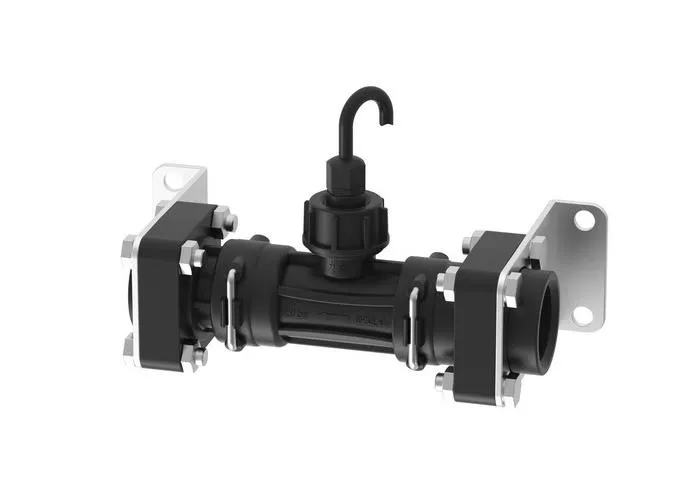In the realm of fluid measurement and industrial process control, flow meters play a pivotal role in ensuring the accurate and efficient management of fluid dynamics. Among the various types of flow meters, electromagnetic flow meters have gained widespread recognition due to their precision, reliability, and versatility. This article provides an in-depth exploration of electromagnetic flow meters, including their working principles, construction, advantages, applications, and maintenance considerations.
What Are Electromagnetic Flow Meters
Electromagnetic flow meters, also known as mag meters, operate based on Faraday’s Law of Electromagnetic Induction. According to this fundamental principle of physics, when a conductive fluid passes through a magnetic field, it induces a voltage proportional to the flow velocity of the fluid. This voltage is then measured and converted into a flow rate.
The relationship between the induced voltage and the flow velocity is expressed by the equation:
E=B×v×D
Where:
- E is the induced voltage (V)
- B is the magnetic field strength (T)
- v is the velocity of the fluid (m/s)
- D is the internal diameter of the pipe (m)
By measuring the induced voltage, the flow velocity can be determined, which is then used to calculate the volumetric flow rate.
Construction and Components
Electromagnetic flow meters are composed of several essential components that work together to measure fluid flow accurately. The primary components include:
Flow Tube: The section of the pipeline where the magnetic field is applied and the fluid flows.
Electrodes: Positioned inside the flow tube, these sensors detect the induced voltage generated by the moving fluid.
Magnetic Coil Assembly: Generates the magnetic field across the flow tube.
Liner: Non-conductive material (such as PTFE or rubber) lining the flow tube to insulate the electrodes from the conductive pipe wall.
Transmitter/Converter: Processes the voltage signals and converts them into flow rate readings.
Power Supply: Provides the necessary electrical energy to generate the magnetic field and operate the transmitter.
Advantages of Electromagnetic Flow Meters
Electromagnetic flow meters offer numerous benefits that make them highly suitable for various applications. Some of the key advantages include:
High Accuracy: Typically provides measurement accuracy within ±0.5% of the flow rate.
Wide Range of Applications: Suitable for liquids with varying viscosities, densities, and temperatures.
No Moving Parts: Reduces maintenance requirements and increases durability.
Bidirectional Measurement: Capable of measuring flow in both directions.
Minimal Pressure Loss: The unobstructed flow tube design minimizes pressure drops.
Corrosion Resistance: Liners and electrodes can be selected to resist corrosive fluids.
Scalability: Available in a wide range of pipe sizes.
Limitations of Electromagnetic Flow Meters
Despite their many advantages, electromagnetic flow meters have certain limitations, including:
Conductive Fluids Only: Not suitable for measuring non-conductive fluids such as oils or gases.
Initial Cost: Higher initial installation costs compared to some other flow meters.
Power Dependency: Continuous power supply required for operation.
Electrode Fouling: Electrodes may require periodic cleaning in applications with high suspended solids or chemical deposits.
Applications of Electromagnetic Flow Meters
Electromagnetic flow meters are widely used across various industries due to their versatility and reliability. Common applications include:
Water and Wastewater Treatment: Accurate measurement of water flow in treatment plants and pipelines.
Chemical Industry: Handling corrosive and aggressive chemical fluids.
Food and Beverage Industry: Measuring liquids such as juices, milk, and syrups.
Pharmaceutical Industry: Flow measurement of liquid medications and solutions.
Mining and Mineral Processing: Slurry flow measurement in mineral processing plants.
Power Generation: Monitoring cooling water and other process fluids.
Installation Considerations
Proper installation is critical to ensure accurate performance of electromagnetic flow meters. Important factors to consider include:
Flow Profile: Install the meter in a location with a stable and fully developed flow profile.
Pipe Material: Ensure the pipe is non-magnetic and compatible with the flow meter.
Grounding: Proper grounding is essential to avoid electrical noise interference.
Straight Pipe Lengths: Maintain sufficient straight pipe lengths upstream and downstream of the meter.
Orientation: Install the meter in a position that prevents air bubbles or sediment buildup near the electrodes.
Maintenance and Troubleshooting
Electromagnetic flow meters require minimal maintenance due to their non-intrusive design. However, periodic inspections and cleaning are recommended to ensure long-term accuracy and performance. Common maintenance practices include:
Electrode Cleaning: Remove any deposits or buildup on the electrodes.
Verification Calibration: Regular calibration checks against reference standards.
Electrical Connections: Inspect wiring and connections for damage or corrosion.
Grounding System Check: Verify that grounding systems are intact and functioning.
Conclusion
Electromagnetic flow meters are a highly reliable and accurate solution for measuring the flow of conductive fluids across various industries. Their non-intrusive design, low maintenance requirements, and broad applicability make them an indispensable tool in modern process control systems. By understanding their working principles, components, advantages, and maintenance requirements, industries can leverage electromagnetic flow meters to enhance efficiency, reduce operational costs, and maintain high-quality process standards.

